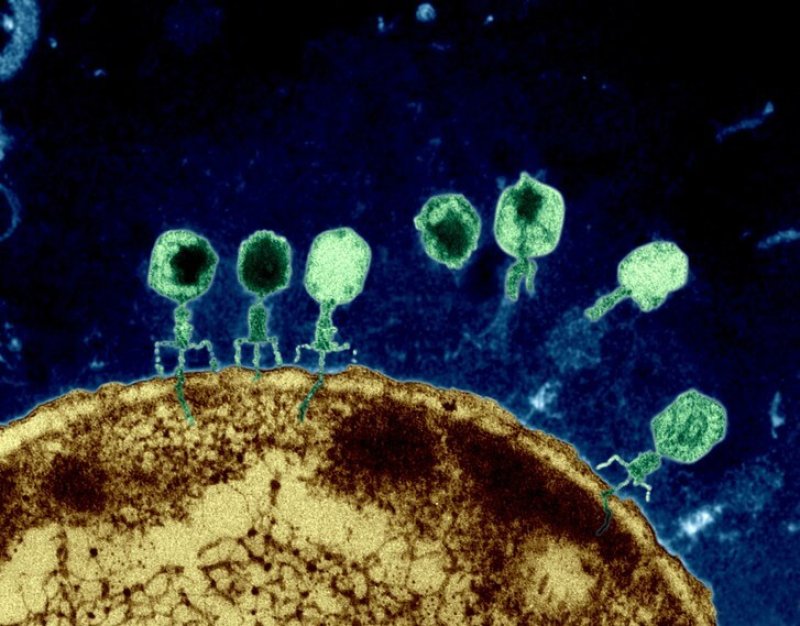The natural world abounds with examples of predators that cooperate to take down their prey. And such teamwork also exists at a microscopic scale, among things that some scientists wouldn’t even classify as alive: viruses. Most viruses don’t infect humans; instead, they target bacteria. These viruses [are] known as phages.
…
[B]acteria and phages are locked in an arms race. The bacteria use CRISPR to defang the phages, and the phages use anti-CRISPRs to subvert the bacterial defenses.…
Adair Borges showed that the slower phages can still win this race—as long as there are enough of them. The first one attacks the bacterium, and is destroyed by CRISPR before it can make enough anti-CRISPR countermeasures. Still, whatever anti-CRISPRs it does manage to make will linger in the bacterium, partly suppressing its immune defenses. The next phages to invade might also be destroyed, but each one weakens the CRISPR defense even further, until finally, the viruses overwhelm their victim.
…
Our own cells can shut down viral genes in a way that’s analogous to CRISPR in bacteria, and several of the viruses that infect us get help from proteins that suppress these defenses. These arms races might help explain why some viruses are more infectious than others.
Read full, original post: How Viruses Cooperate to Defeat CRISPR































